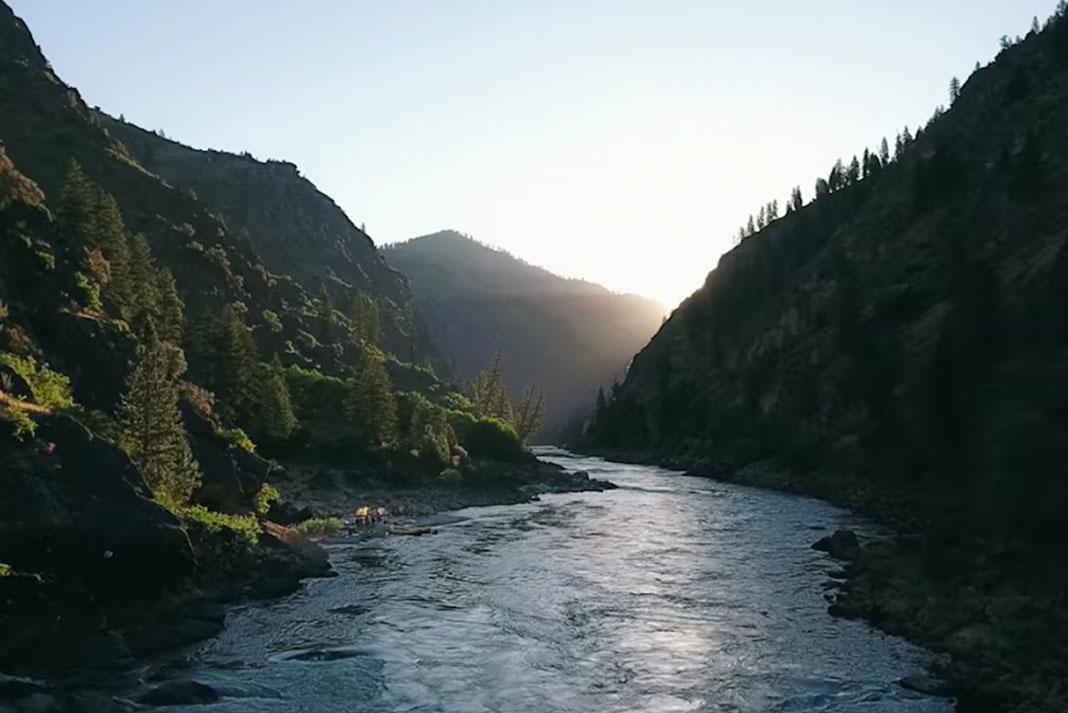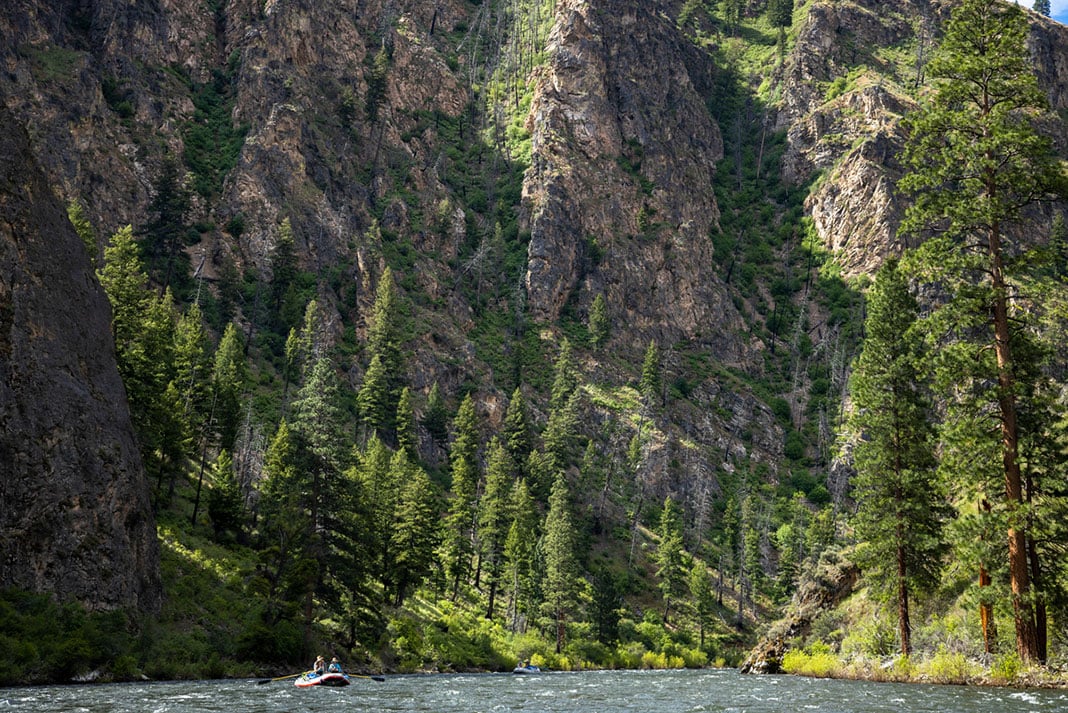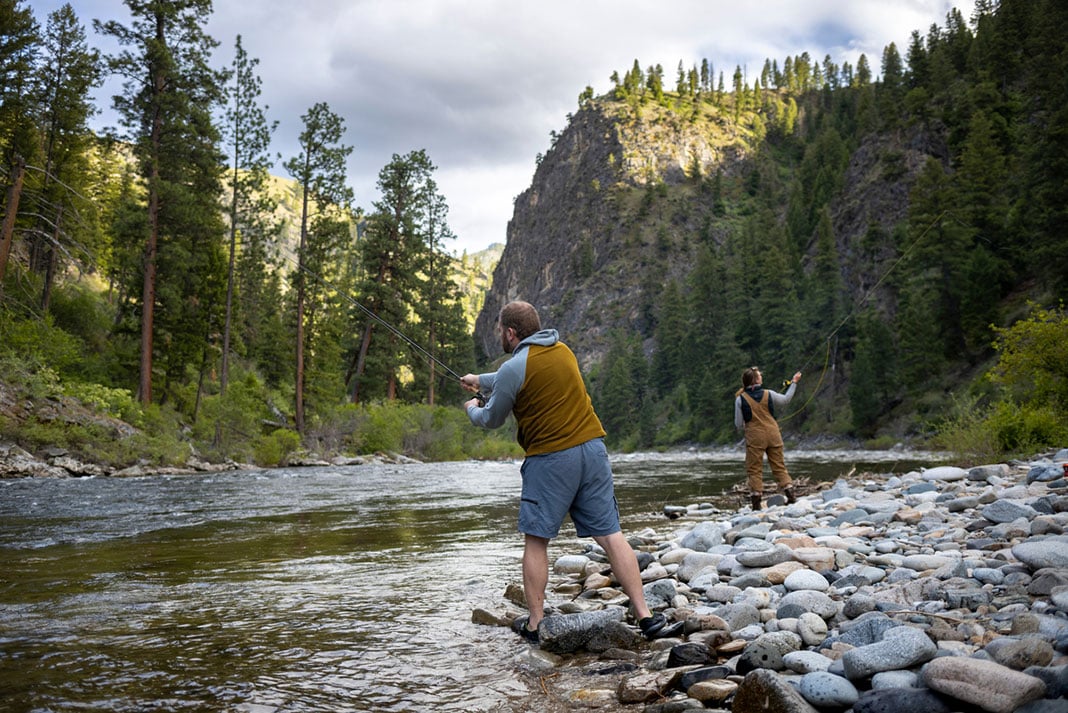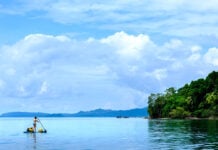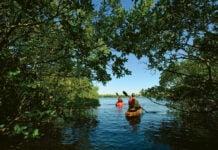Some rapids sit front of mind for every boater who’s paddled the Middle Fork of the Salmon. Eli Kretzmann, 14-year professional river guide and trip leader for Boundary Expeditions on the Middle Fork, says even senior guides have been known to get the boater butterflies thinking about Velvet Falls.
“There is a good deal of anticipation while hurtling toward the nearly river-wide ledge,” says Kretzmann, noting Velvet Falls at high water is anything but velvety. “The ‘soft spot’ taken ever so slightly offline can be a violent endeavor even for a fully loaded gear boat. I once had two guests launch out of the front of my boat on this hit.”
One of the eight rivers designated in the original 1968 National Wild and Scenic legislation, the Middle Fork of the Salmon River in Idaho is internationally recognized as an outstanding wilderness and whitewater experience.
From the confluence of Marsh and Bear Valley Creeks to the confluence with the Main Salmon River, the Middle Fork spans 104 miles of river, the Frank Church Wilderness, and contains at least 100 action-packed mostly class III to IV+ rapids. Throw in an oasis of riverside hot springs in which to regale your crew with river tales, and you can forget the Grand Canyon. The Middle Fork is a whitewater paddler’s river trip.
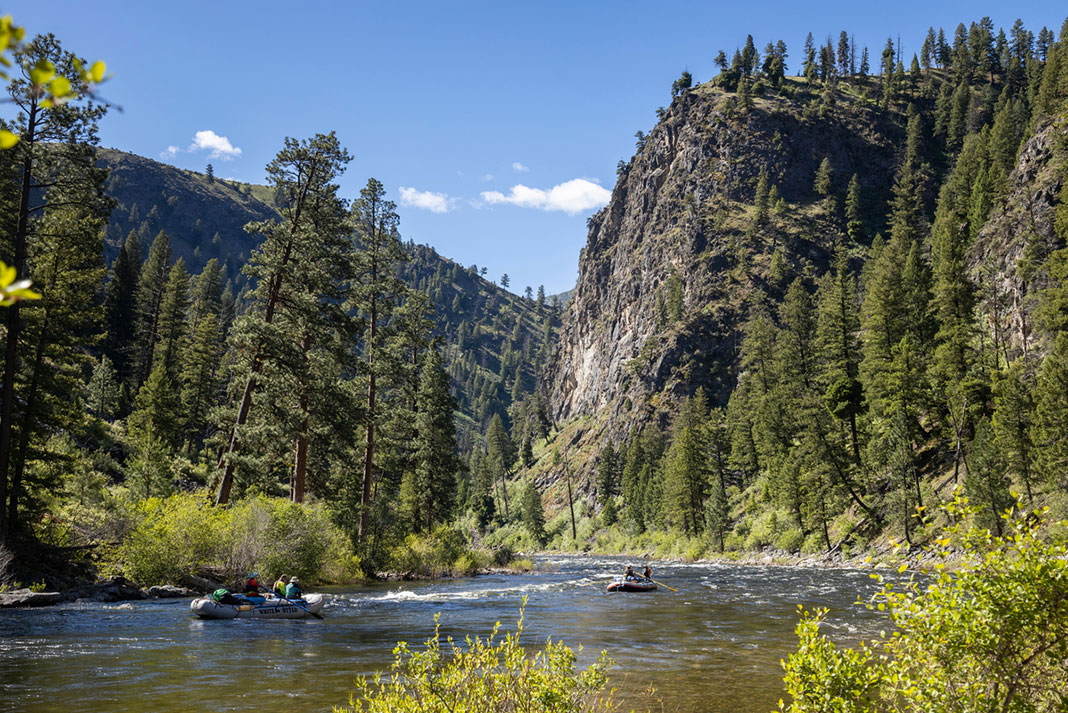
Score a Middle Fork of the Salmon River permit and plan the ultimate trip
May the odds be ever in your favor
A lottery process is used to award permits for trips departing between May 28 to September 3. To apply for a permit to boat the Middle Fork of the Salmon River during this time, submit your request through recreation.gov between December 1 and January 31. How are your odds of winning a permit in the lottery? Well, that depends on how many people apply for the permits available, but in 2021 the odds of winning one were less than 1%. If you do get a permit, you’ll be notified on February 14.
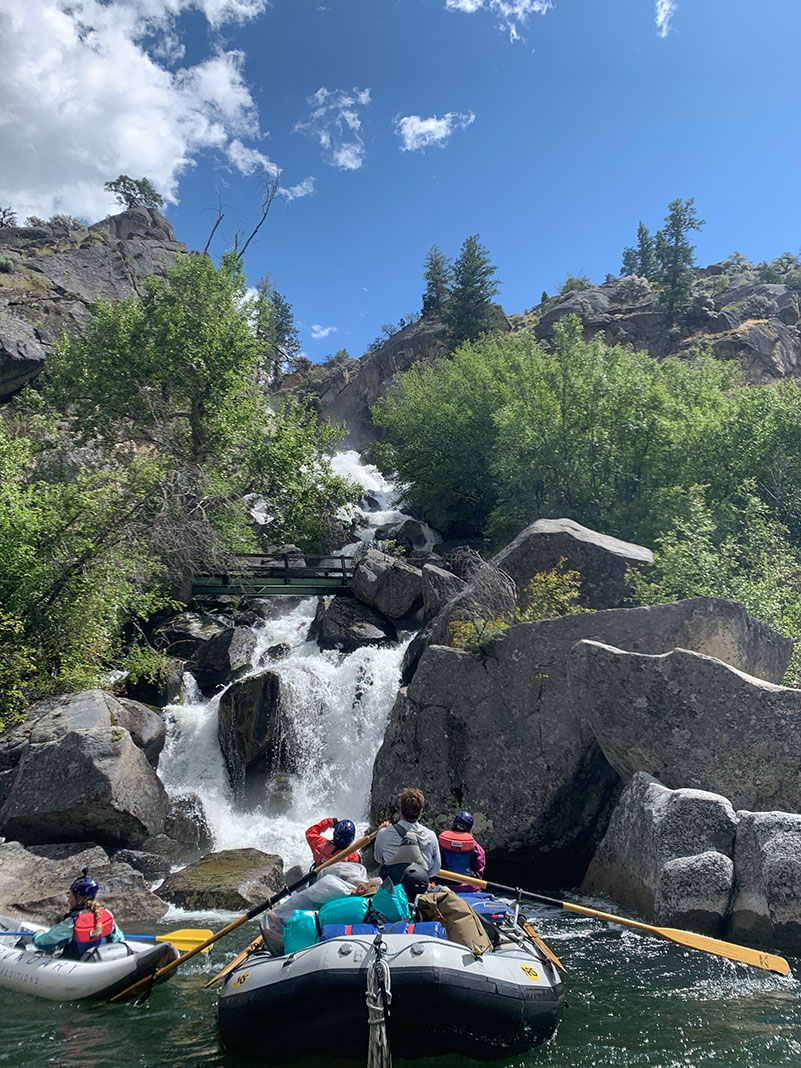
Outside of the lottery season, you can paddle the Middle Fork by obtaining a permit through a reservation system. If a permit is obtained, the Forest Service charges a $4 per-person, per-day user fee. The 100-mile trip takes an average of six days to complete.
Remember, because the Middle Fork flows and conditions can vary greatly from season to season and day to day, scoring a permit is not a guarantee your trip will happen. Natural events can dampen river access as well, such as landslides and wildfires.
The more you know about the Middle Fork
The Salmon River is the homeland and waterway of the Nimiipuu (Nez Perce), Pohogues (Shoshone-Bannock) and the Agaidika (Lemhi-Shoshone) Tribes.
The “River of No Return,” as the Middle Fork was coined in the early days of being explored by trappers, gold seekers and boat pilots, is named for the impossibility of returning wooden sweep boats upriver from where they terminate their journey. Instead, boats were disassembled and sold for lumber.
The unique design and functionality of sweep boats, specific to the Middle Fork region is particularly captivating to outsiders who journey down this river. This boat was originally borrowed from the Mississippi River and evolved for use on the Middle Fork. The large boat’s ability to float relatively high on the river’s surface and distribute the weight of cargo, made it flourish during a time when heavy mining equipment and homesteading supplies were needed on remote stretches of the Salmon River. At the same time, the surface area, cumbersome sweep arms in the front and back of the craft, combined with its rareness, make it a challenge for boat pilots to learn. Many have tried, and many have wrecked. Sweepboat disaster stories are traded like currency in the region.
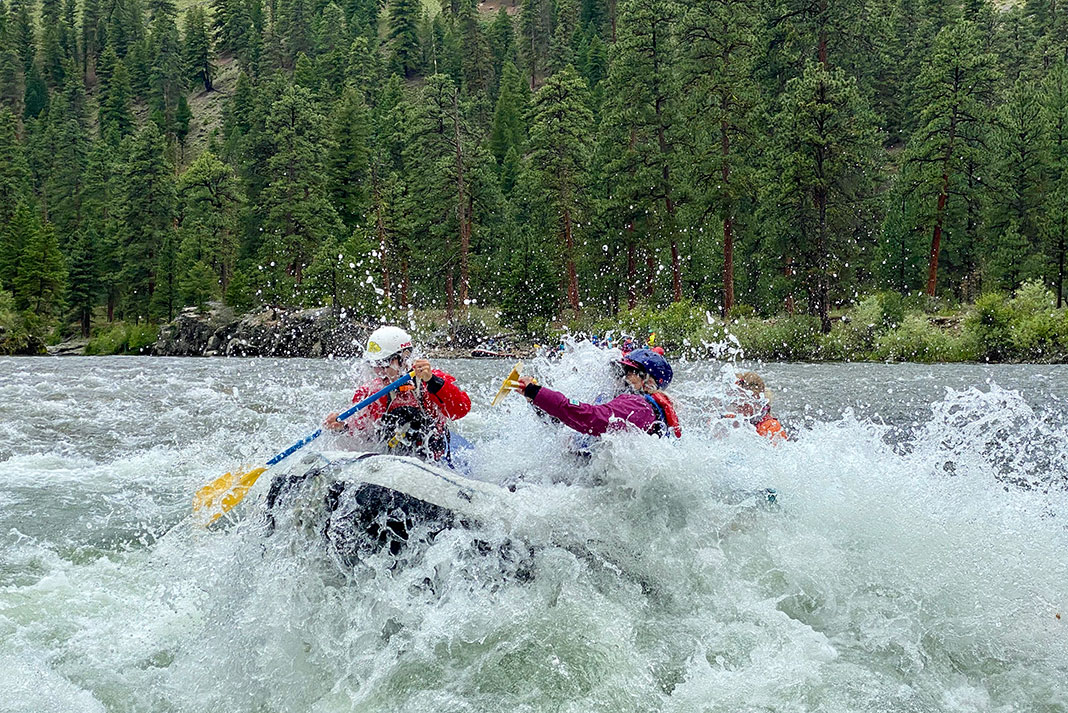
Notable rapids
What makes the rapids on the Middle Fork so challenging isn’t just their whitewater classification. Because flows vary drastically on the Middle Fork of the Salmon River throughout a single season, the rapids will likely look extraordinarily different during each trip down the river. To add insult to injury, the flow output on the Middle Fork is typically measured in feet, read from a man-made painted measuring stick at Middle Fork Lodge (33 miles into the trip). While this can be translated to CFS, the best way to fit in with locals is to memorize the units in feet so as to speak the same language. Here’s an example of the cumulative 2022 readings from Middle Fork Lodge, measured in feet.
Like Velvet Falls, at high water (starting at 4.5 to 5 feet) Kretzmann considers Pistol Creek rapid a butterfly maker. “A rocketing constriction between two cliff walls, I still haven’t decided if the scout is more helpful or if it just causes more jitters. But at almost any time of year taking advantage of the scout is a wise move for first-time Middle Forkers,” advises Kretzmann.
Also at high water, Kretzmann finds Rubber’s true colors show (between 5.5 and 4.5 feet). “Rubber is one of those rapids that incites pure adrenaline, but by the time August comes around [low water season] it’s embarrassing to even call it a rapid. At flows over 6 feet it tends to soften. In its prime, gear-boat flipping laterals collide from both sides, inducing sweaty-palmed indecision.”
Boat ramp etiquette
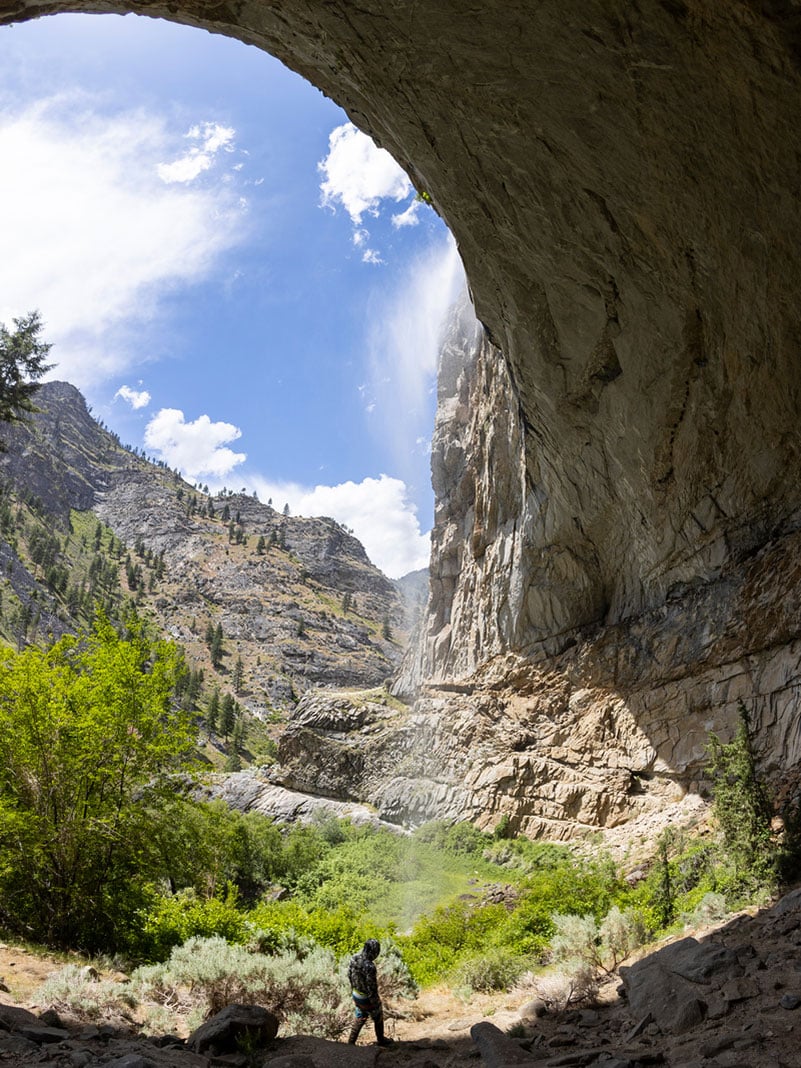
Because of high traffic at launch sites, here’s a word from the wise al la Kretzmann on boat ramp etiquette: “Understandably, different states and different rivers have different boat ramp dynamics, but here on the Middle Fork, it’s common courtesy to be quick, nimble, and flexible at the boat ramp.”
This advice also reflects certain unique and probably unfamiliar aspects of launching on the Middle Fork for most boaters. For example, at Indian Creek launch, the only alternative launch site if Boundary Creek can not be used, gear and people have to be flown in. And the ramp is a long wooden sled track. When water is low, the bottom of this ramp is not water but an exposed river bed. Boats must be carried, fully weighted to the river shoreline, however far it has receded. All this to say, pay attention and be swift under circumstances you may not be familiar with so everyone can launch on time.
The diplomatic practice of Middle Fork camping
Typically, on the Middle Fork, camp locations are assigned via round-robin selections at a 4:30 p.m. meeting the day before launch. Each permit group is randomly assigned a number and when a respective group’s number is called, they can select their top camp choice. Rounds will continue until camps are selected for all nights of each party’s trip. There is a somewhat detailed flow chart of how campsite round-robin assignments occur based on what launch sites are open. For complete details on Middle Fork campsite selection, see the Forest Service webpage.
When to go
Kretzmann thinks late May and early June are the best times to visit the Middle Fork for the whitewater and best “spring green.”
“By the end of June, the fish are typically biting more. July is family season with fun rapids and warm temperatures, which allow for swimming. For anglers, August is hopper season [slang for grasshopper]. Orange-bellied hoppers or stimulators for the win.”
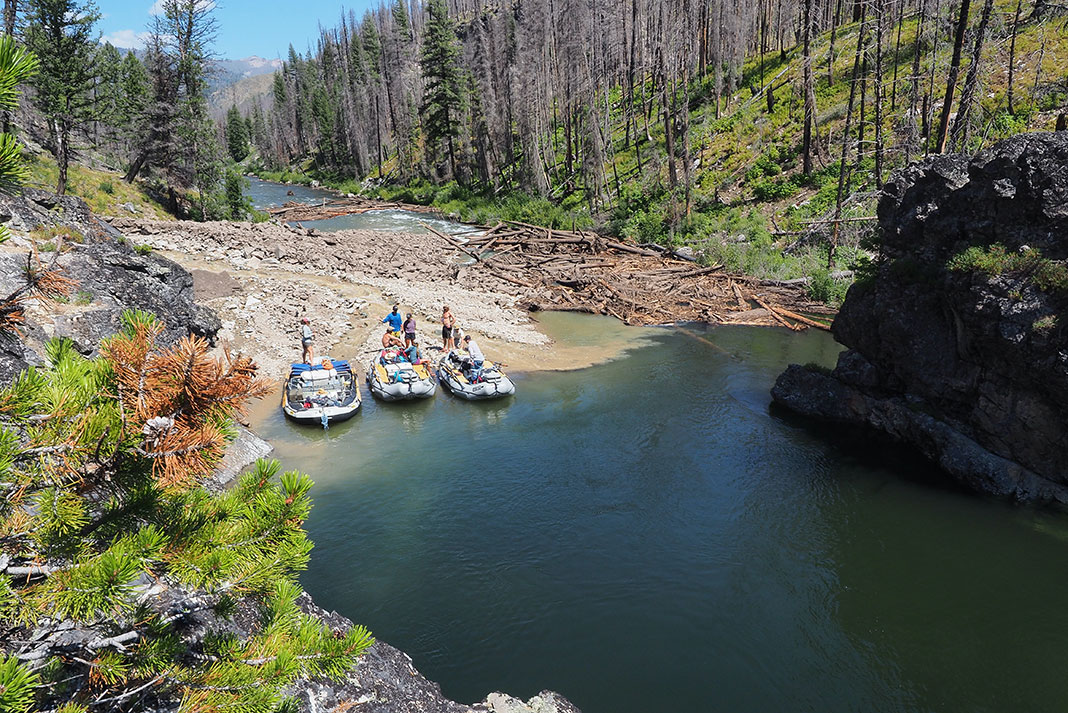
Outside of the lottery-awarded permit season, the Middle Fork of the Salmon River is generally experiencing its lowest flows of the year. The river also tends to experience its highest flows of the year just before the lottery-awarded permit season begins—due to melting snowpack. Weather outside of the lottery permit season can also be a gamble. Even May or October can pack snowfall and cold weather.
Soak in Middle Fork of the Salmon River hot springs
Being enveloped in epically wild scenery, animal encounters and picturesque waterfalls await around each bend. But the ultimate prize of the Middle Fork of the Salmon River is the riverside hot springs that steal visitors’ time and attention.
For an outstanding aerial view of the landscape, see Sunflower Hot Springs. For a magical and captivating hike-in soak spot, check out Sheepeater Hot Springs—where goats are also rumored to steep. Trail Flat, Loon Creek and Hospital Bar Hot Springs are also favorites which will heal and restore your weary bones right smack dab in the middle of your river trip.
Set a river shuttle
Most people running their own trip down the Middle Fork of the Salmon will hire a shuttle service to handle the logistics of getting their vehicles to takeout. Shuttle service operators on the Middle Fork and other Idaho rivers are available on the Idaho Outfitters & Guides Association site.
Middle Fork of the Salmon River flows
The USGS maintains an online gauge at the Middle Fork Lodge to provide up-to-date Middle Fork of the Salmon River flows.
Middle Fork of the Salmon River maps and guidebooks
Guides on the Middle Fork cite Matt Leidecker’s map, The Middle Fork of the Salmon River, A Comprehensive Guide – 5th edition as an invaluable map and guidebook. Pre-trip mandatory education includes reading River of No Return by Jerry Carrey & Cort Conely and watching the 1954 River of No Return major motion picture featuring Marilyn Monroe as rear sweep captain.
Commercial rafting companies
You can enjoy a trip down the Middle Fork without going it on your own. In fact, a guided trip is a great way to ensure a trip rather than betting on the lottery. Several rafting outfitters operate on this remote fork of the Salmon River and trips tend to cost between $3,000–4,000. A complete list can be found on the Idaho Outfitters & Guides Association site.
Additional info to know before you go
Follow Leave No Trace principles on the Middle Fork. And remember before you get on the river you’ll need to have camp equipment required by the Forest Service. That includes a Idaho Invasive Species Sticker which can be obtained through Idaho Fish and Game.
Feature photo: John J. Webster // Visit Idaho




